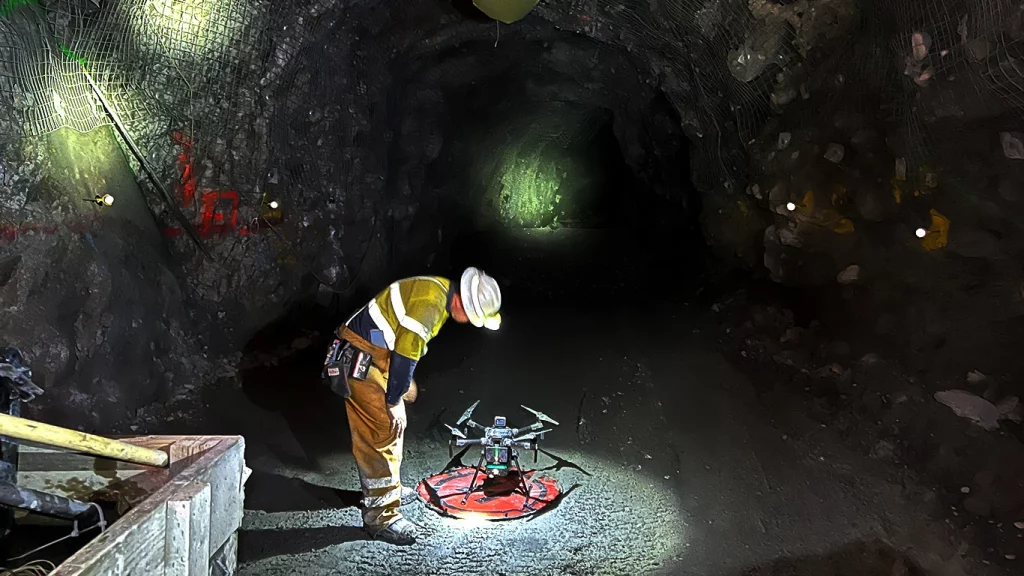Exyn Technologies says it is helping mines all over the world to become safer and more efficient with the use of its products, reporting on a comparison study made at Northern Star Resources Limited’s Pogo Mine in Alaska that showed the ExynAero is not only more efficient and accurate at mapping difficult places, but that it is also safer for the surveyors involved.
In this study comparing ExynAero, a fully autonomous aerial robot, with traditional CMS methods, the report authors showcased a significant improvement in safety, survey quality and time savings.
Exyn’s fully autonomous robot pairs a rotating LiDAR unit with a flight platform in order to perform cavity mapping surveys within open stopes. This hardware, combined with what is now the highest level of aerial autonomy, Level 4A Autonomy (AL4), allows survey teams to map deeper, more accurately, safer, and faster than before.
Andrew Loomes, Chief Mine Surveyor, Pogo Mine, said: “It is infinitely safer to use…we’re nowhere near the brow now, doing jobs around the corner in some cases. The safety aspect is definitely one of the driving factors to why we purchased the gear.”
Using Exyn technology instead of traditional surveying methods is a very low risk alternative for both surveyors and equipment as it keeps both out of potentially dangerous and unknown situations, Exyn says.
“The quality is unmatched as the unique application of Level 4A Autonomy to pilot the unit doesn’t require line of sight. As a result they can prove areas are between 12-35% bigger than traditional methods because they lack the limitations of traditional methods and have greater capacity to detect things like gas pockets.”
Time wise, it is 45% quicker than traditional methods requiring only 15 minutes compared with the 27.3 minutes taken by traditional CMS, the authors said.
Loomes added: “Even though [CMS] takes twice as long, from a quality standpoint, to get the same data from a CMS would take even longer with more equipment…the data doesn’t even compare.”











